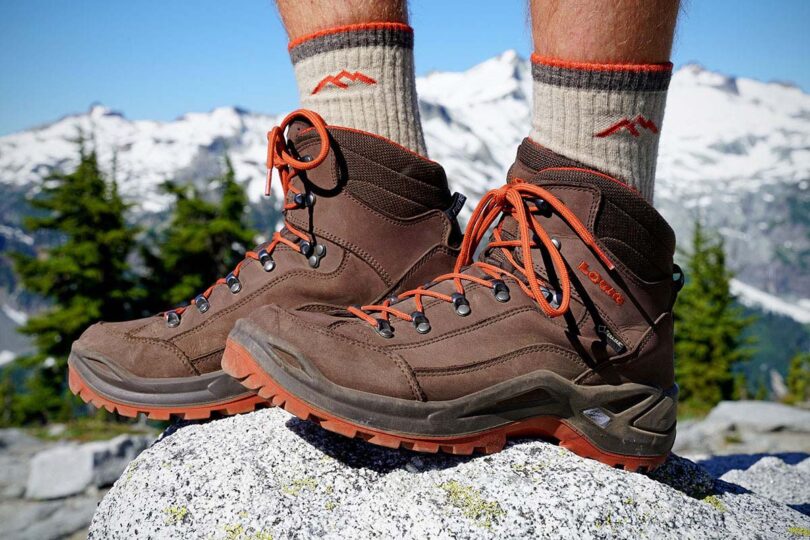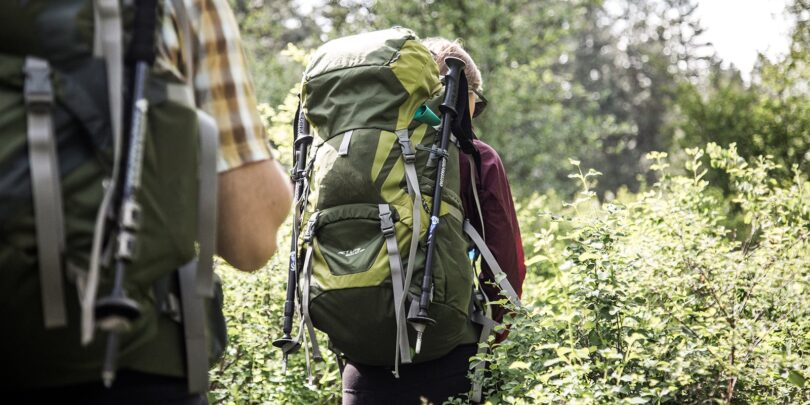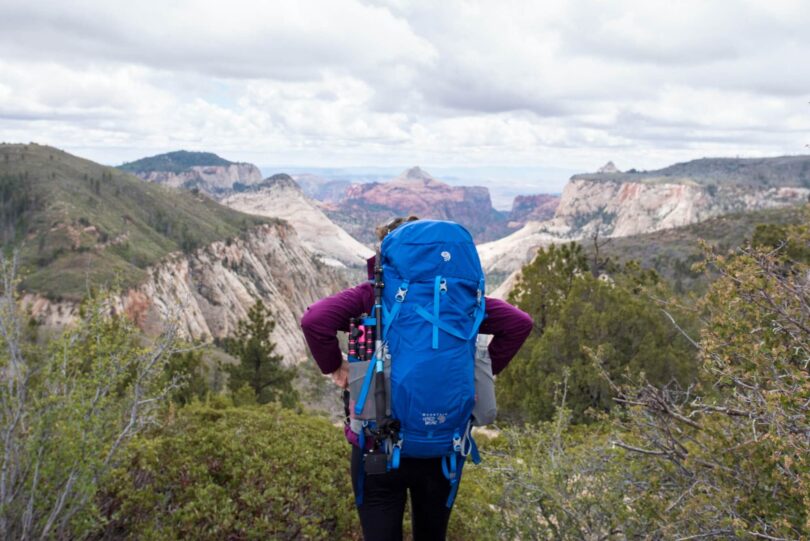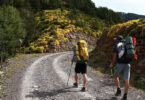Hiking and trekking are some of the favorite pastimes of many people and honestly, that’s not surprising. There aren’t a lot of things that can top a feeling of being outdoors, in nature, exploring and enjoying it. However, if you don’t have the proper equipment, your happiness can be short-lived, as faulty or inadequate equipment can pretty much destroy your hiking adventure.
Now, when we’re talking about bad hiking equipment two things come to mind right away – shoes and the backpack. Given the fact that everyone, even those who have never hiked in their lives, understands the importance of a good shoe, we’re going to skip past it and focus on the other most important thing when it comes to hiking equipment and that’s a backpack.
We’re going to go over some of the most important features a quality hiking backpack should have and why you should never settle for less if you’re serious about hiking. Let’s get started!
1. Adjustable Suspension System

img source: amazon.com
All of our backs and upper bodies are different. Some of us have broad shoulders, some have narrow shoulders. Some have a flat back, others have curved backs – you get the point. Now a quality hiking backpack does not care about your upper body shape or size. A quality backpack will fit each body type perfectly.
How? With an adjustable suspension system – that’s how. Every hiking backpack should come with a fully adjustable suspension system so you can adjust the backpack any way you like and please. You should be able to move shoulder straps any way you want, you should be able to move the hip or sternum belt and strap any way you please and so on. Long story short – a backpack should become a part of your body, not rest on your shoulders. If you can fully adjust it – you won’t even feel you have it on.
2. Outer Pockets
Another thing that’s very important and what every quality hiking backpack should have are outer pockets – preferably ones that you can easily reach when you have to. This is very important because, as you know, you need a lot of stuff when you’re hiking. You need your tent and a body bag, you need toiletries, food, water, drinks etc. Now, imagine a scenario in which you have to get some of those things in a hurry and you can’t because that stuff’s buried at the bottom of your huge backpack. So, ideally, you’ll keep your essentials like tent, water or food in the outer compartments of the backpack so you can easily and quickly reach them if you have to.
3. A Shoe Compartment

img source: switchbacktravel.com
For those longer hiking or trekking trails, it’s not uncommon for you to need a spare pair of shoes. In those instances, you should probably aim to get a backpack with a separate shoe compartment, according to IBC7 Outdoors. As you know, shoes and socks get rather smelly when you walk for 10 hours, so it wouldn’t be wise to keep a spare pair of shoes along with the rest of your stuff, especially food or drinks.
4. A Separate Bottom Compartment
Anyone with any hiking experience knows how to pack a backpack. Light things go near the bottom and the heavy ones go near your back. That’s the best way to disperse the weight and keep everything nice and comfortable.
Now, that’s easier said than done, because you might need some of those lighter things and unless you plan on digging them out from the bottom of the backpack, you could benefit from a separate compartment at the bottom. Basically, the more compartments – the better the backpack. Also, separate access to each of the compartments is a must.
5. The External Straps

img source: rei.com
Generally speaking, the external straps and loops aren’t the most obvious choice for a must-have feature of a backpack, as the more things you attach to the outside of a backpack the harder it is for you to control the centre of gravity, which then makes it harder for to hike. However, they can come quite in handy sometimes, so it’s always good to have them – just in case. For instance, you can always use them for your lightweight items. Even if you don’t end up using them – it’s good to know that you have the option to do so.
6. A Separate Water Compartment
Even though most hikers always carry a water bottle on hand, it’s important to have a hydration system on your back as well. For longer trekking or hiking trips or difficult terrains, you want your hands free at all times, so a hydration system within your backpack is a must. A separate compartment for a water tank always comes in handy, because, first of all, a separate compartment means added security for your water tank and also, you’ll certain you’ll keep the rest of your equipment dry.
7. A Hip Belt Pocket

img source: shopify.com
No hiking backpack is complete without a hip belt, just like no hip belt is complete without a belt pocket. However, a small belt pocket just won’t cut it anymore. In most cases, you’d use that pocket to keep your phone in there and given the state of the phones nowadays, not a single decent phone will manage to fit in one of the small pockets, so a larger one should be the one you seek. Also, if the pocket’s large enough – you can even fit some additional stuff in there as well. Stuff like sunglasses or a wallet, for instance.
8. A Rain Cover
Finally, a quality hiking backpack should come with an integrated rain cover. If your backpack has it, that means you no longer have to think about packing a separate rain cover and you can just pull it out from the pocket at the bottom of your backpack, cover what needs to be covered and continue with your journey.
As you can see, a quality hiking backpack should come with a bunch of perks and features and we hope you agree with us on which ones are the most important ones.







